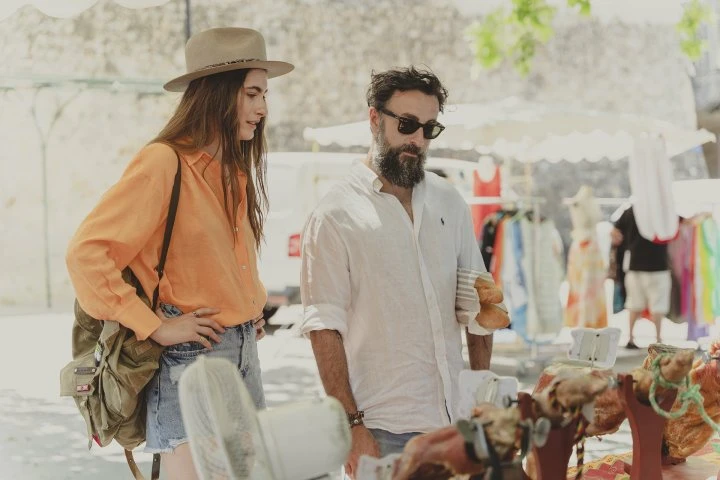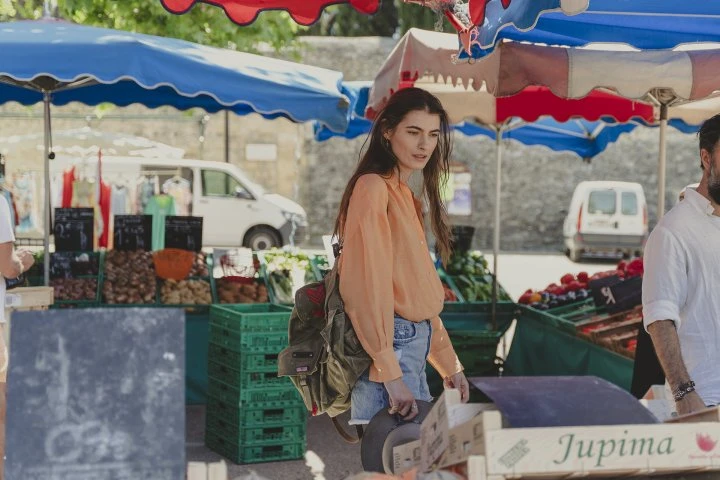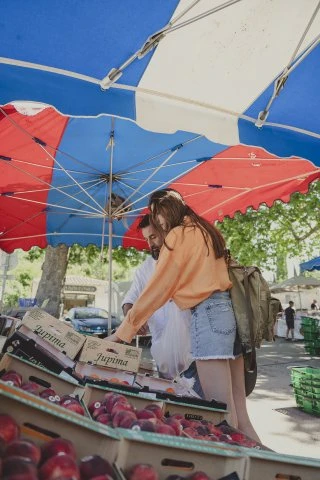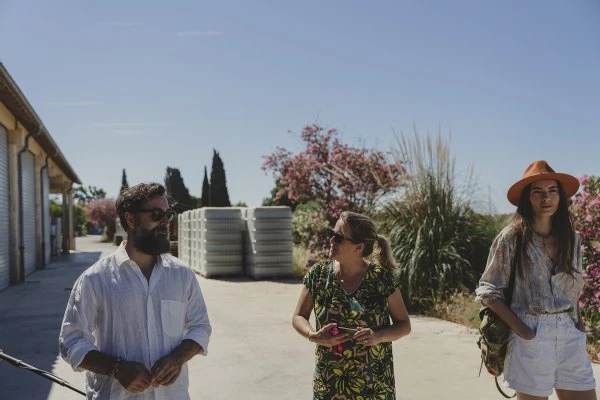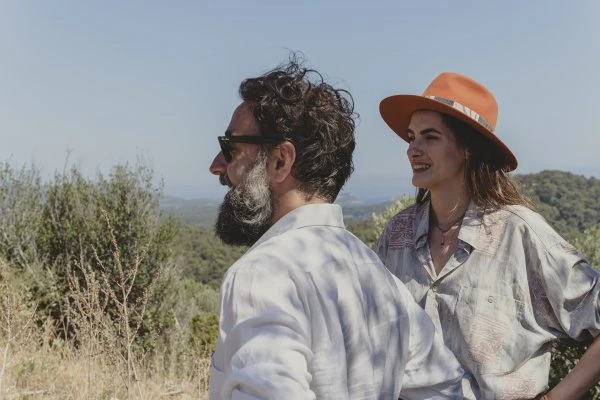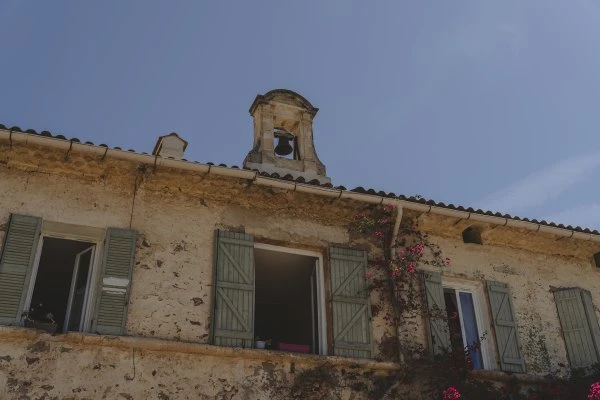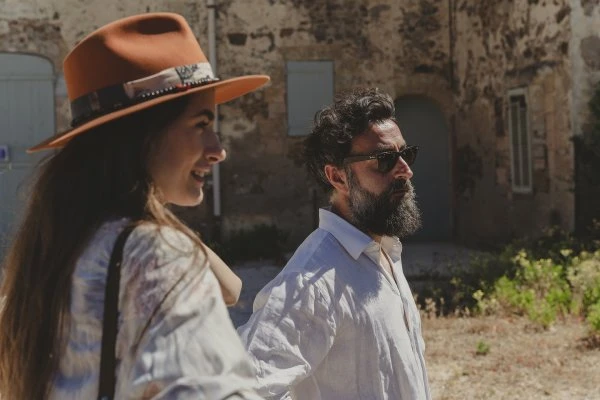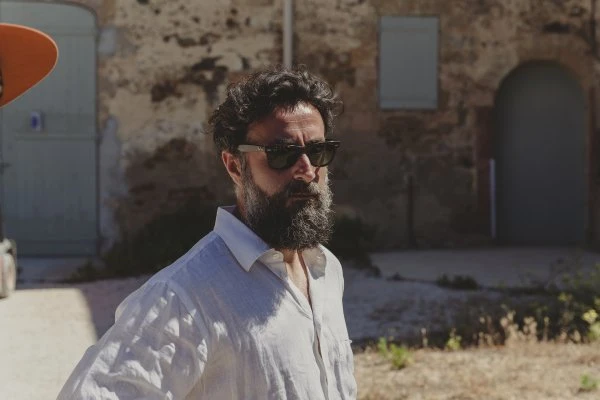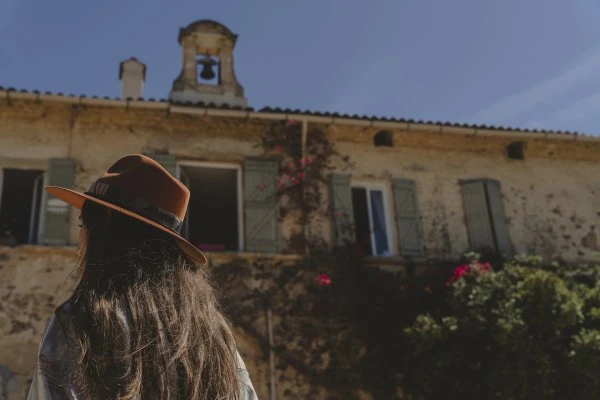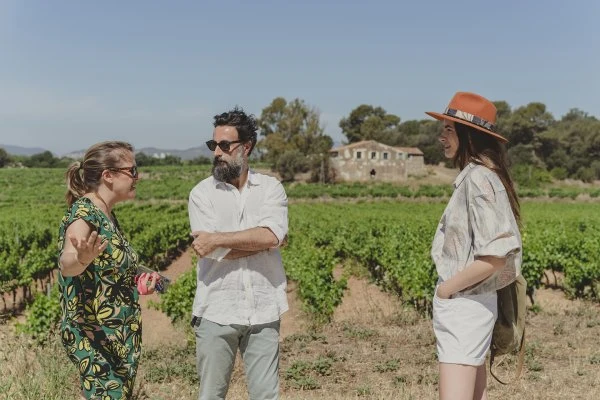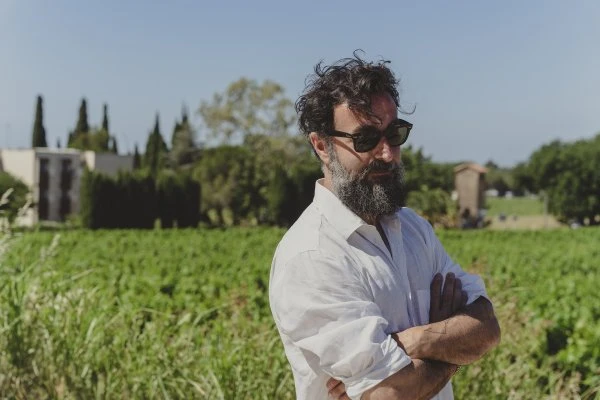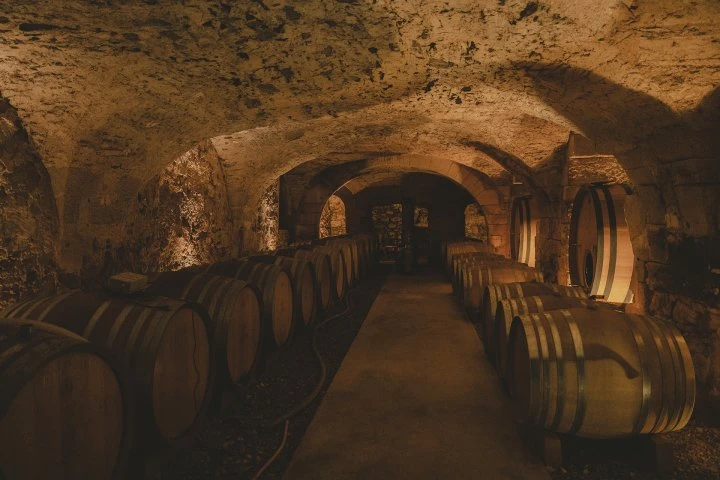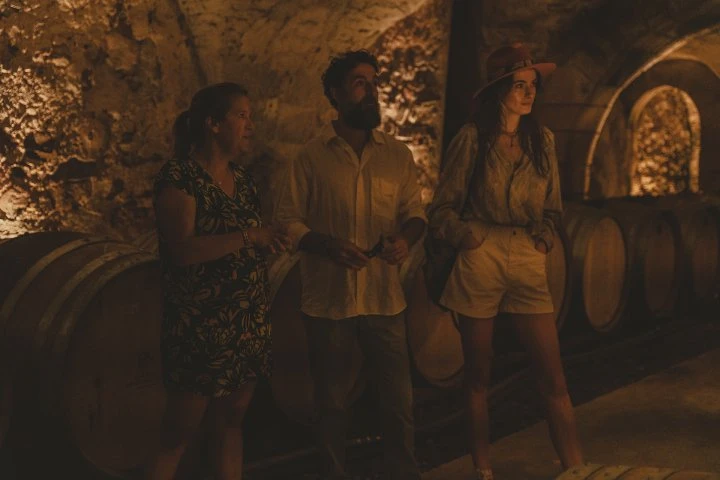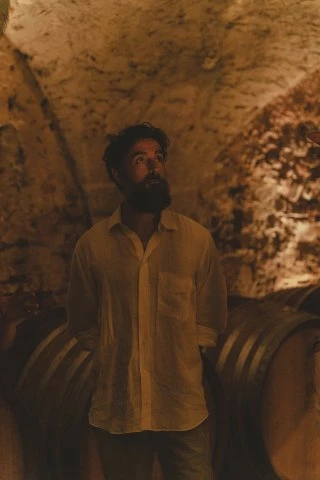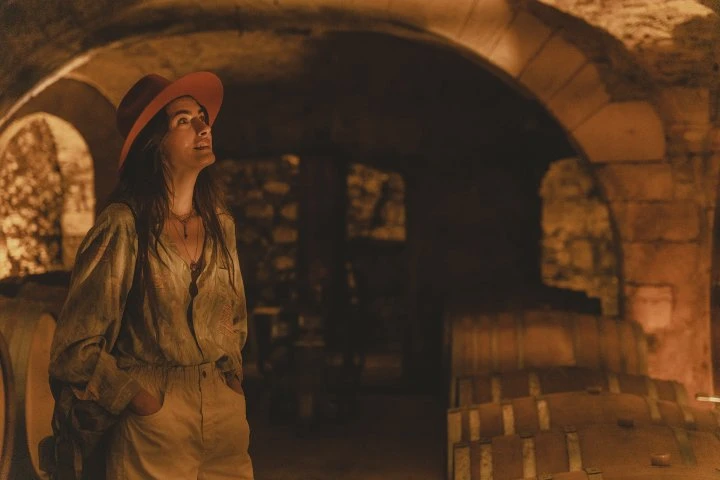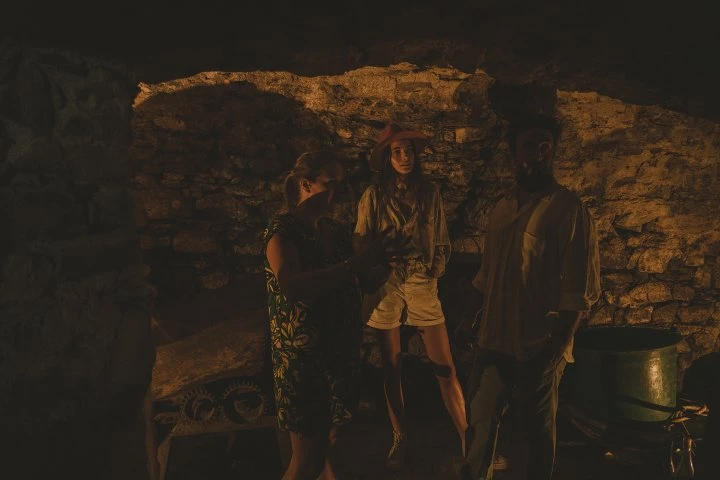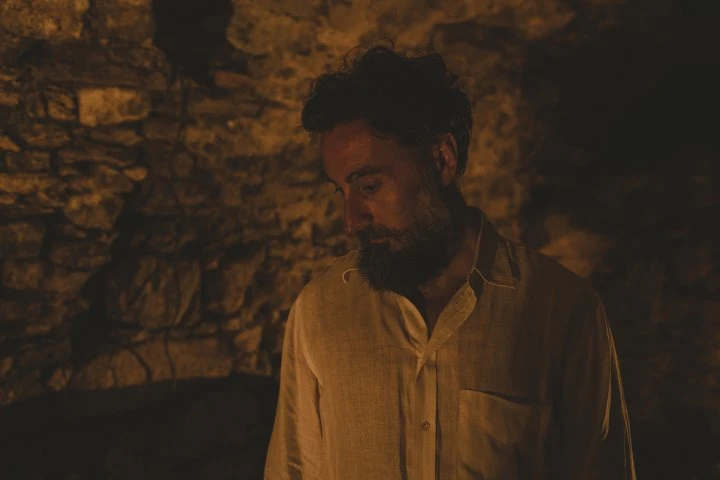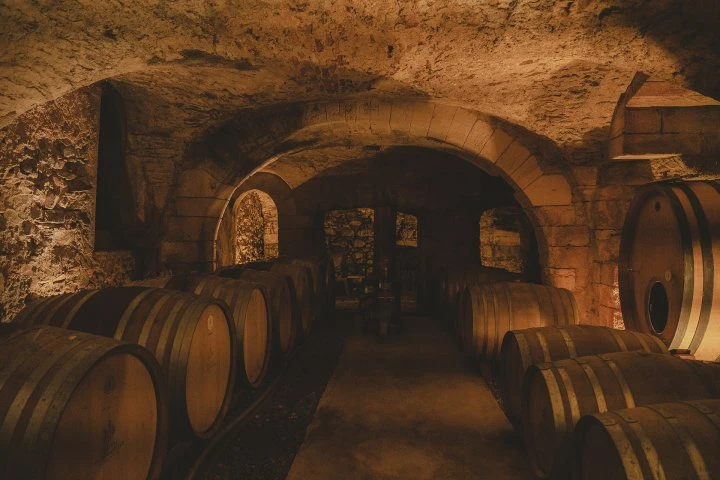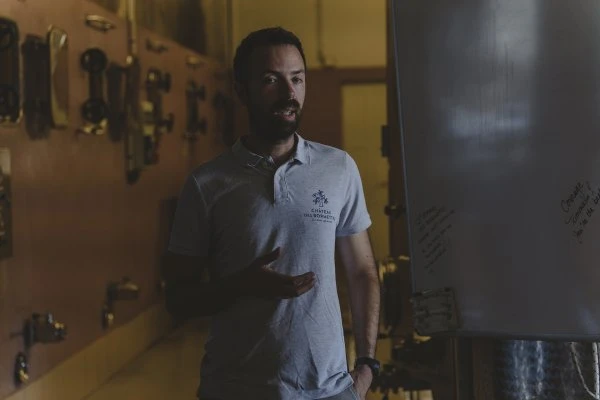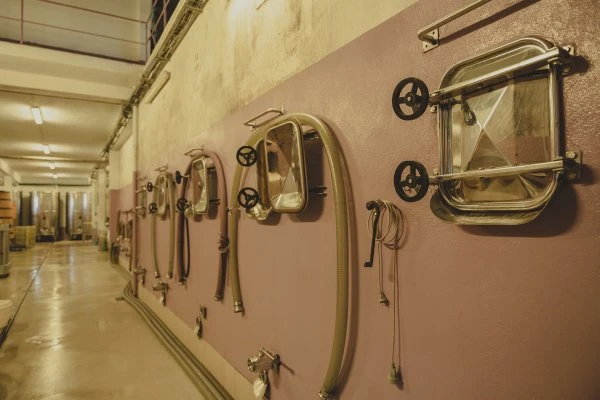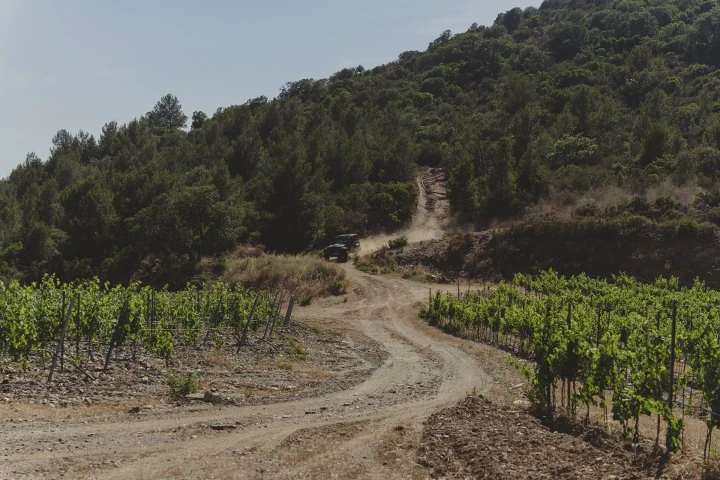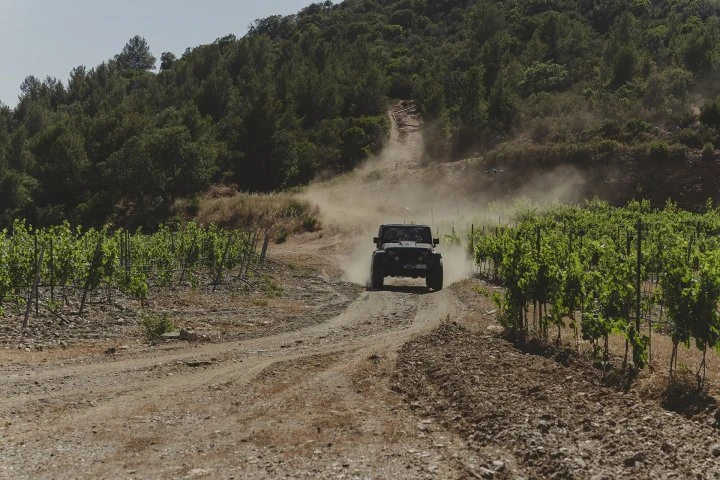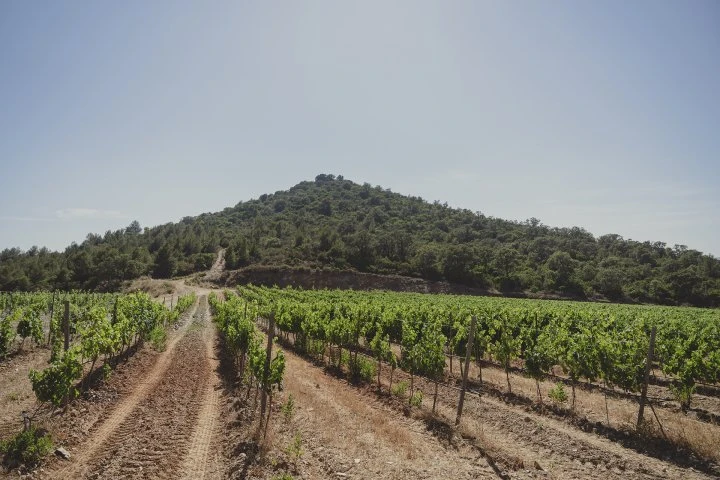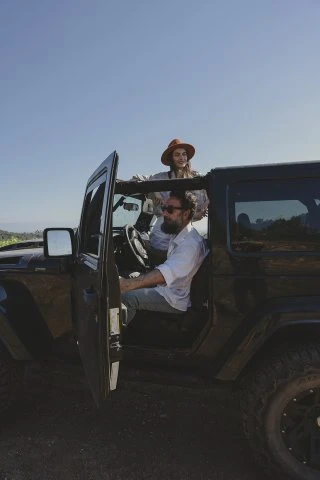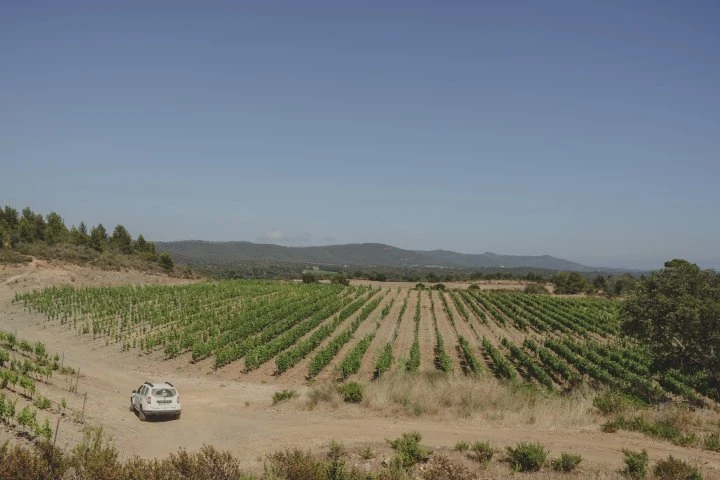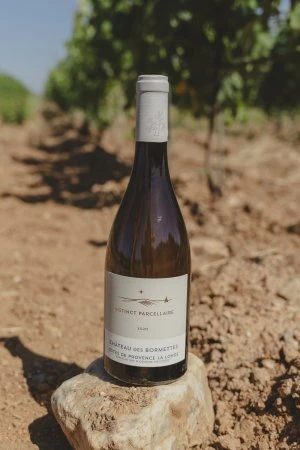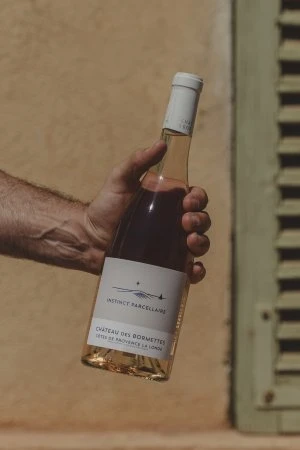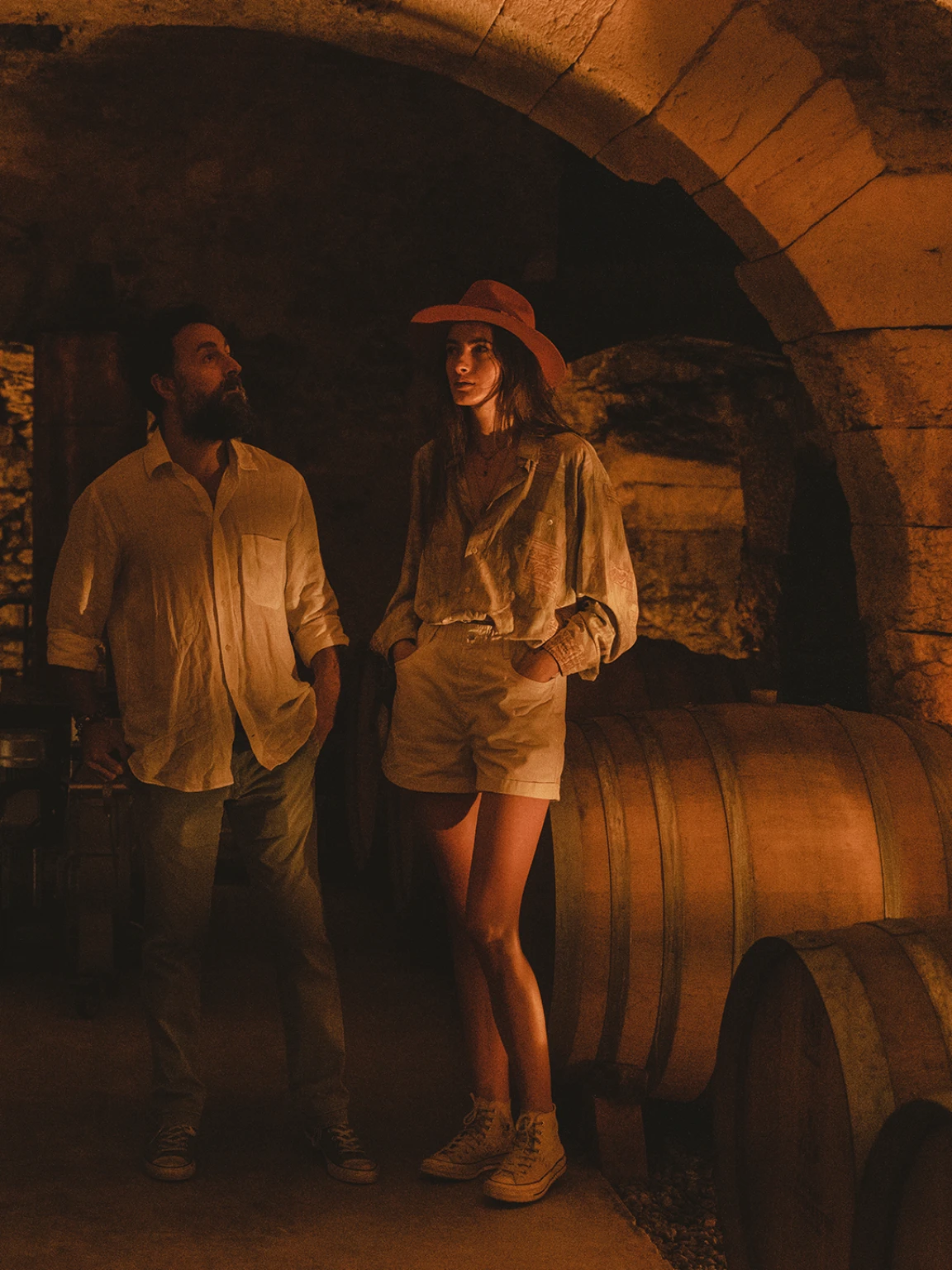
Château Des Bormettes
85-90% of our production is focused on rosé: here in Provence, we are very fond of pale wines.
Tommaso Meletti, cellar master of Château des Bormettes, escorts us around the estate accompanied by Julie Darneau, the Administrative and Business Manager. In every nook and cranny, we breathe in a history dating back to the 10th century and which, in the 1980s, went on to become an outstanding wine estate.
For many, Provence conjures up endless expanses of lavender, small hilltop villages and the unceasing chirping of cicadas.
For us, however, the region is all about its colourful markets, changing form and flavour according to the rhythm of the seasons and unleashing all the fragrances offered up by the terrain.
Each month colours the stalls differently and, with the advent of summer, we find peaches, apricots, watermelons, strawberries in a picturesque atmosphere that delights and enchants us, awakening our senses.
We are in La Londe-les-Maures, located between Toulon and Saint-Tropez: in the very heart of the Côte d'Azur whose cover, if it were a book, would feature images of historic hotels, spectacular scenery, visions of jet setters basking in rosé-soaked glamour and cruising along the coast in vintage convertibles.
However, it is the chapters of its most authentic stories, those daring explore off beaten track, that we most want to discover.


Charmingly nestled amidst dense shrubs and trees, the turnoff to the estate is a beauty spot in its own right. As we drive along the short, rutted driveway, we turn our backs on la Plage de l'Argentière and, under a clear blue sky, arrive at Château des Bormettes: seventy-two hectares of vineyards, in thrall to the sea lying a just few hundred metres away and surrounded by a forest giving way to thick mediterranean scrub. We don't yet know it, but here, silent and surprising, Instinct Parcellaire Blanc awaits our arrival.
Instinct Parcellaire Blanc is the wine from Château des Bormettes that impressed us most. Try it now along with Instinct Parcellaire Rosé, the winery's other prized bottle.
We are welcomed by Julie Darneau, the Administrative and Business Manager who, although she isn’t the owner, perfectly embodies the ethos of the estate. Waiting for us in the square in front of the oldest building, she wears a smile that radiates both the brightness of spring and the vibrancy of summer.
At last, we meet. I have heard so much about you both.
Welcomed by these words, we cannot but feel at home. All around us the sunlight is so strong that it all but blots out the contrast between individual colours, leaving everything bathed in soft, blurry pastel tones.
Then, without further ado, Julie guides us through the history of the place, where every nook and cranny bears witness to an unknown past.
The roots of Château des Bormettes date back to the 10th century, but it was not until 1588 that the monks of the Chartreuse de la Verne took over the estate and began to exploit it for agriculture.
In 1855, the estate was bought by Horace Vernet, official painter to Louis Philippe and Napoleon III. Passionate about agriculture, he fell in love with the estate and built the current Château. Listening to Julie's words, we feel like archaeologists on the trail of a vanished civilisation.
Handed down over the centuries, Château des Bormettes was bought in the 1980s by Fabrice Faré and his wife Hélène, who began to develop the vines into a real wine-growing estate.
With my inquisitive nature, I would be capable of spending hours listening to Julie and wandering about in search of suggestive corners, only to wonder what had taken place in them.
We stroll around the unpaved yard until we find some welcome shade outside weathered, pastel-green door in the oldest part of the winery. At the behest of the estate's owners, nothing has been altered here, with the exception of replacing the ancient bell hanging high above us atop the roof, and which had been looted by the Germans during the Second World War.
Julie inserts the keys into the lock and, with excitement in her voice, proceeds to unlock it as she declares: Here is la Chartreuse.
A rush of cold air, emanating from the very bowels of the earth, sweeps over us, as our eyes seek to make sense of shapes outlined about us in the dim light. The smells of wet earth and damp, overlaid by the scent of wood and a tangible chill in the air, instantly bring refreshment from the scorching heat outside.
We are inside the very heart of Château des Bormettes, in the magnificent sanctuary once used for oil production and now employed for ageing the estate's finest wines in barrels. Julie points out three magnificent chambers: large niches where the screw presses were once housed, completed in 1704, as indicated by the date engraved in the stone, bearing witness to the Château's past.
As Simona says: It is as if you are actually touching history.
The Italian voice we hear coming behind us awakens me from my reveries and indicates the arrival of cellar master, Tommaso Meletti.
Become an Explorer
Every month we will present an unknown and exclusive winery we have discovered. Every month you will receive what we consider to be its best bottle delivered directly to your door: a wine that is always new, exclusive and surprising.
Well aware of the effect this place has on those seeing it for the first time, he gives us a few minutes to fully savour it before leading us to the most modern part of the cellar. Tommaso exudes the energy and balance of someone who has everything under control. Moving like a conductor among his musicians, he points out and explains every aspect of the production process, all the while underlining the importance of speed and low temperatures here.
85-90% of our production is focused on rosés. These are wines that must not unduly macerate and hence cannot remain too long in contact with the skins. Here in Provence, we are very fond of pale wines.
He explains that the various phases of the production process are carried out extremely rapidly in order to avoid too much colour dispersion. Harvesting takes place at around 3 a.m. to enable the grapes to be processed at lower temperatures in order to maintain their aroma and prevent oxidation.
Although the rosé wines of Château des Bormettes have my fullest attention, my curiosity is also drawn to their whites and reds. Productions so limited that I can only cite the extreme precision and selectivity with which they are made.
Leaning against an old, disused Chartreuse barrel and cooled in the shade of the greenery above us, we allow ourselves to be guided by Julie and Tommaso in our discovery of these gems.
The sea stretching out before us is a preview of what we are to find in our glasses.
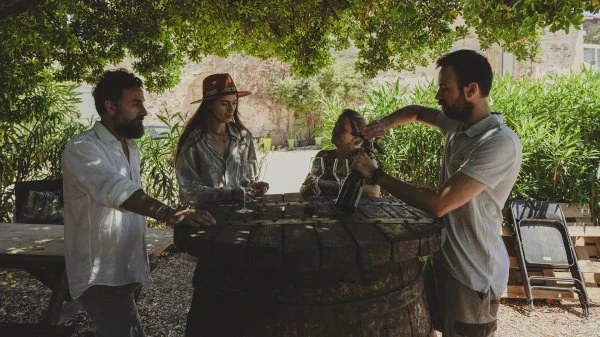
On the nose, everything Tommaso has described arrives like a gusting southwester and the scent of Mediterranean scrub makes itself known, instantly transporting me to a forest where the only noise is the sound of cicadas. The work of Tommaso and his team is impeccable. Respect for the terroir and for the raw materials reach their maximum expression in every glass tasted.
I am sure we will be featuring more Château des Bormettes labels in the future, but for now there are two wines that whispered the language of Provence and the Côte d'Azur to we outsiders.
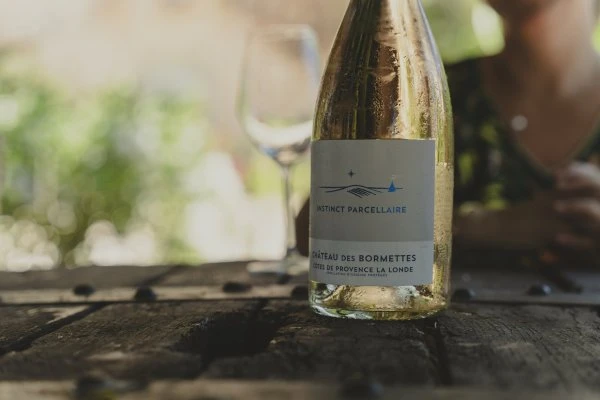

As Tommaso explains, Instinct Parcellaire Rosé reflects the philosophy of this place.
A truly complex but elegant wine; neither too rich nor too exuberant, it displays a clean, crisp tension. Behind its coral-coloured tinge, it reveals discreet aromas of jasmine, peach and grapefruit on the nose. In the mouth we can find a suave and subtle rosé offering aromas of Mediterranean fruit reflecting the scents of our hills.
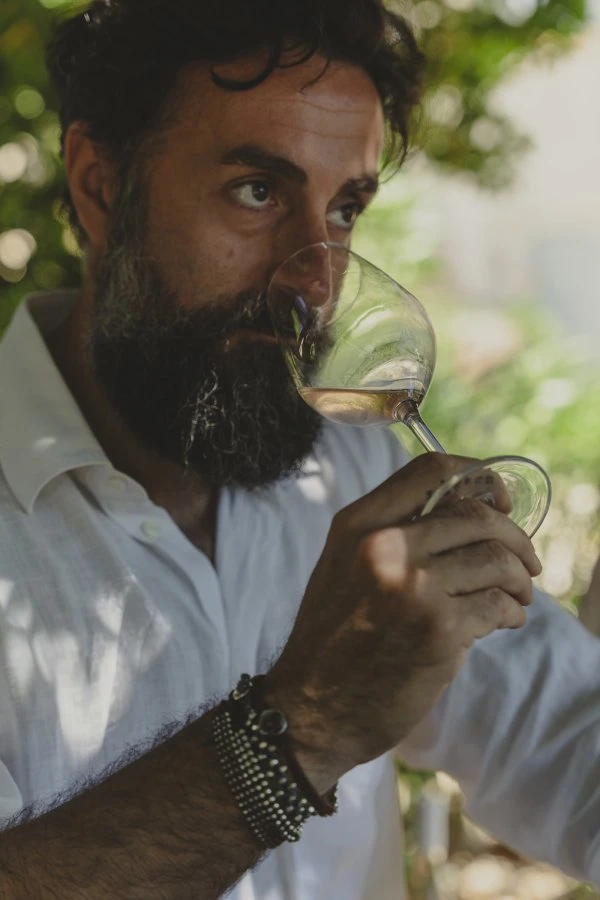
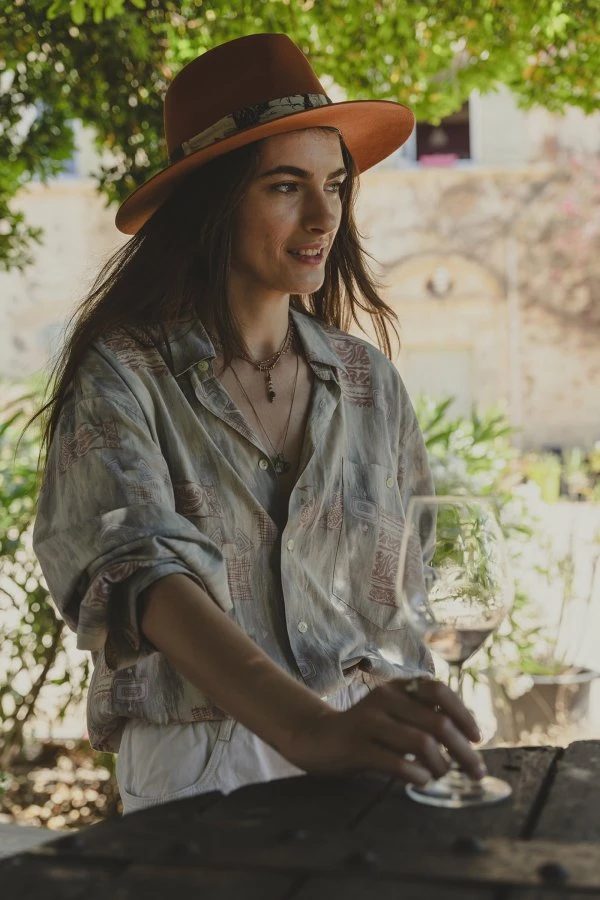
This rosé, with its lingering minerality and delicious salinity, is the perfect signature of this terroir overlooking the sea. This wine is La Londe and perfectly expresses its identity.
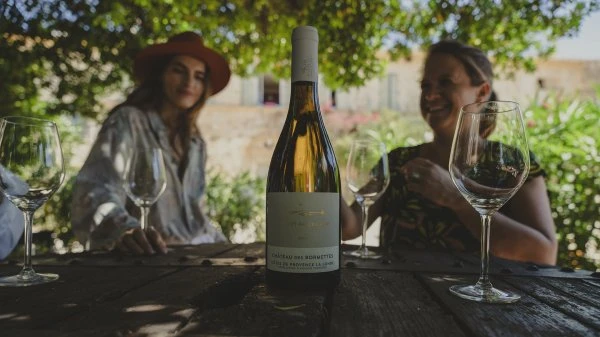
Instinct Parcellaire Blanc, produced in only 5600 bottles, is a 100% Rolle that spends 3 months in steel tanks and 12 months in oak barrels.
The nose offers up subtle aromas of rhubarb, fresh lemon and liquorice, perfectly integrated with tertiary wood notes. On the palate it amazes with its immense finesse and soft roundness giving way to a jasmine finish. This is a really good wine to drink chilled on sunny summer days.
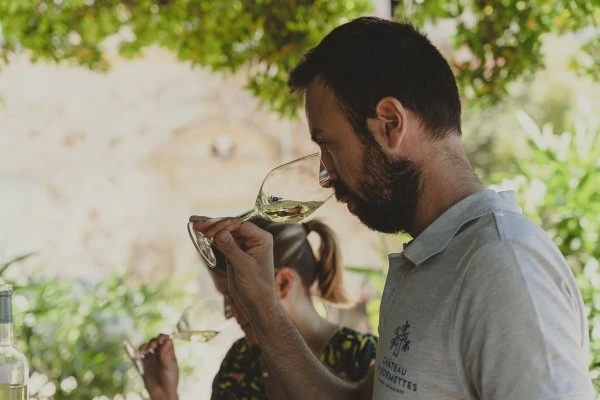
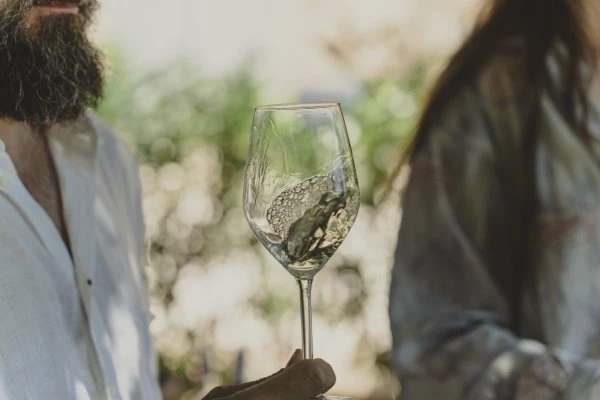
It arouses the desire to walk barefoot across a freshly mown lawn whilst slowly sipping it.
Enthusiastic and gratified, we get into the jeep and follow Julie and Tommaso along the dirt tracks leading to the highest point of the estate.
On every side, run rows of vines of a colour so intense and radiant that they almost seem fluorescent, while not far away, our gaze is drawn out to the Golden Islands: Porquerolles, Port-Cros and Le Levant. In this coastal spot, cradled by the azure blue reflections of the Mediterranean, the Provençal vineyard of Château des Bormettes has taken root and the crystalline soil of the surrounding hills gives life to award-winning wines of distinctive identifying characteristics.
This is the Provence I love. The real Provence, the one living behind the glossy covers that makes an authentic and lasting impression.
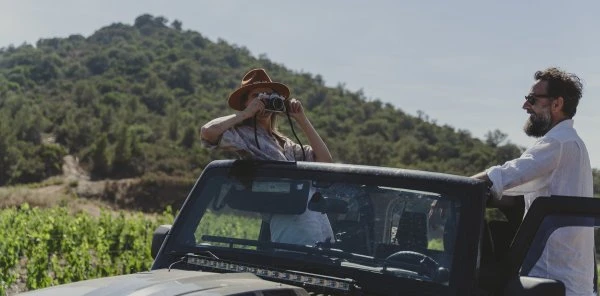
Subscribe
Every month we will present an unknown and exclusive winery we have discovered. Every month you will receive what we consider to be its best bottle delivered directly to your door: a wine that is always new, exclusive and surprising. If you choose an annual subscription and pay in a single instalment, you will receive a 10% discount.
